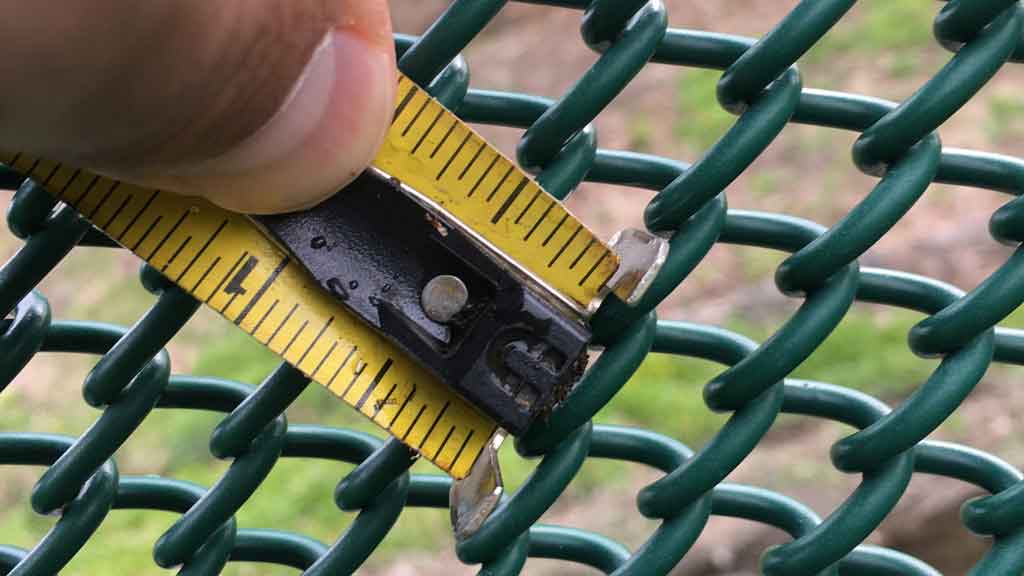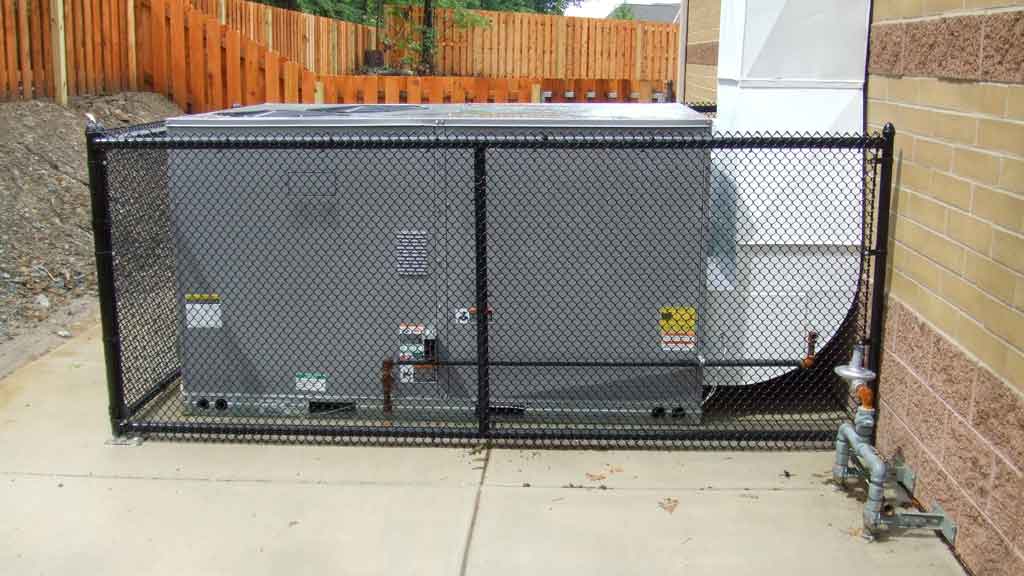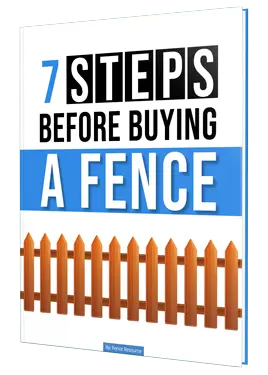The correct name for chain link mesh is “fabric”. However, for the sake of the this article and the readers searching for information regarding this topic, I will continue to refer to it as mesh.
Chain link mesh comes in many variations and sizes. Height, mesh size, gauge, color and coating are all options fence manufactures offer.
We’ll review these options in this article. By the end, you’ll know everything there is to know about chain link mesh.
How Do You Measure Chain Link Mesh?
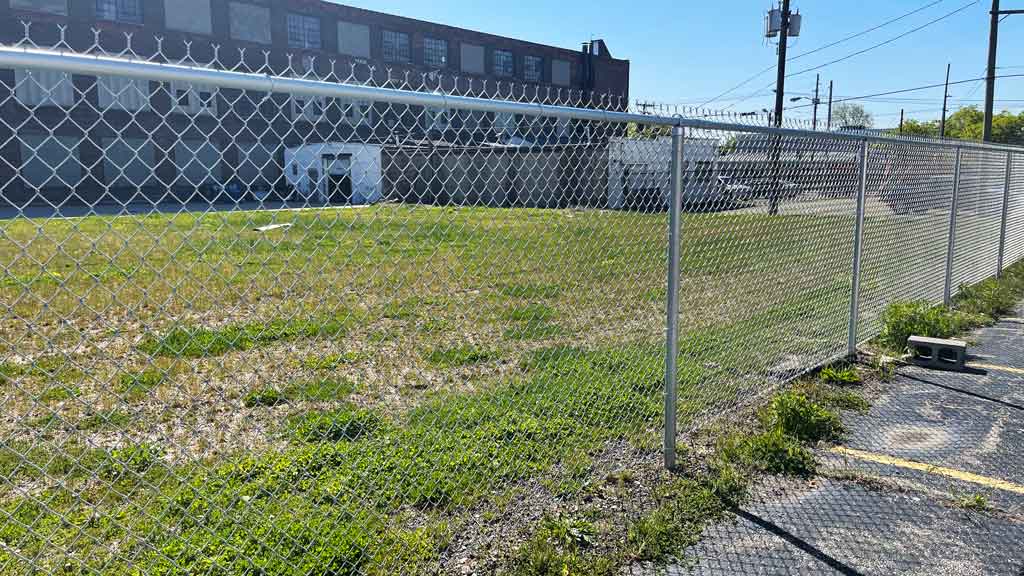
Measuring chain link mesh includes the height of the mesh, how thick or gauge of the wire used to build the mesh is, and what size the diamond of the mesh is.
However, two of the measurements are easy to figure out, the height and mesh diamond size of the mesh.
Knowing what the gauge of the wire mesh takes a trained eye or the use of a measuring tool such as a caliper. Let’s review all three factors and how to measure them.
Chain Link Wire Mesh or Fabric Height
Measuring the height of chain link wire mesh is easy. Simply measure it from the top to the bottom. Unless yours is a custom height, the measurement will be in even foot increments.
Standard heights start at 3′ tall and go up to 12′ tall. However, some manufactures offer custom heights. These heights can be as low as 18″ in height and up tp 22′ in height.
Chain Link Mesh Size
-
Very Small 3/8″ Chain Link Mesh -
Black Vinyl Coated Chain Link Mesh with 1″ Spacing
Mesh size for chain link fence refers to the size of the diamond. Determining the mesh size requires measuring the distance between the individual strands of wire that form the diamond. However, take the measurement between two parallel strands of wire.
Standard mesh sizes are 1-3/4″, 2″ and 2-1/4″. Sometimes a smaller mesh size is need for added security. Referred to as mini mesh or mini link. Standard mini mesh sizes are 3/8″, 1/2″, 5/8″ and 1″.
The smaller mesh makes climbing difficult. Furthermore, it makes cutting the mesh with bolt cutters almost impossible.
Chain Link Mesh Gauge
The gauge of chain link mesh refers to a thickness measurement of the steel wire strands. Ask any experienced fence installer and they can quickly tell you the gauge of the wire used to produce a particular fence mesh.
However, the average consumer will not be so quick to reply. Standard gauges for wire mesh are 11.5, 11, 9 and the 6. Standard gauges for vinyl coated mesh are 9,8 and 5 gauge.
As a result, the coating process will effect overall gauge. The smaller the number, the larger the diameter when dealing with wire gauges.
In order for the consumer to measure the gauge of chain link mesh, a set of calipers makes the task easiest. However, knowing the conversion from wire diameter to wire gauge is a must.
Below is a simple chart covering both diameter and gauge of standard galvanized or aluminized chain link mesh. Vinyl coated wire mesh can get confusing depending on what process used to coat the mesh. Therefore, it is best to have a fence professional determine the inner gauge of the wire mesh and out gauge of vinyl coating.
| Diameter of Wire | Gauge of Fence |
|---|---|
| wire diameter of .192 | 6 gauge |
| wire diameter of .148 | 9 gauge |
| wire diameter of .120 | 11 gauge |
Chain Link Mesh Selvage Styles
Selvage refers to how the ends of each strand of wire are finished. Therefore, it determines how the top and bottom of the wire mesh looks.
Wire strands are folded over so there are no sharp ends exposed or are twisted together. Twisted selvage leaves sharp points exposed at the ends.
The process of folding each strand over is called “knuckling”. As a result, there are three configurations the salvage can be.
Knuckle Knuckle Wire Mesh
Knuckle knuckle selvage is when both the top and bottom of the wire mesh have the ends folder over to prevent sharp points.
This is popular for residential applications and some commercial applications such as playgrounds and sporting complexes.
Knuckle Twist Wire Mesh
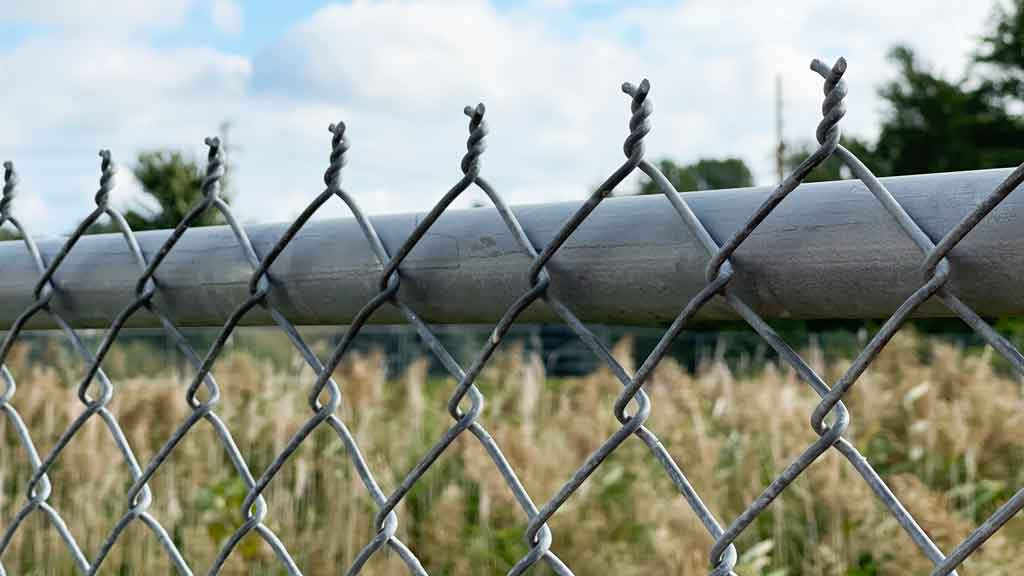
Just as it sounds. One end will have the ends of the wire mesh knuckled over with the opposite end having the twisted ends. More often than not, the twisted ends are at the top.
As a result, becoming a deterrent for climbing a fence. However, some applications require the sharp twists to be on the bottom of the wire mesh.
Knuckle twist wire mesh is popular for both commercial and industrial projects. Ideal for light security applications.
Twist Twist Wire Mesh
When both the top and bottom have twisted ends you have a twist twist selvage. This type of selvage is used in applications requiring the highest security.
Having twisted selvage on both the top and bottom of the fence is a major deterrent to climb over or under the fence.
Coatings For Chain Link Mesh
The coating on chain link mesh will determine how long it will last and what color it will be. Galvanized, aluminized and vinyl coated coatings are all standard options available from chain link fence manufacturers.
Let’s take a look at each coating process and discuss where they can be found in real world applications.
Galvanized Mesh
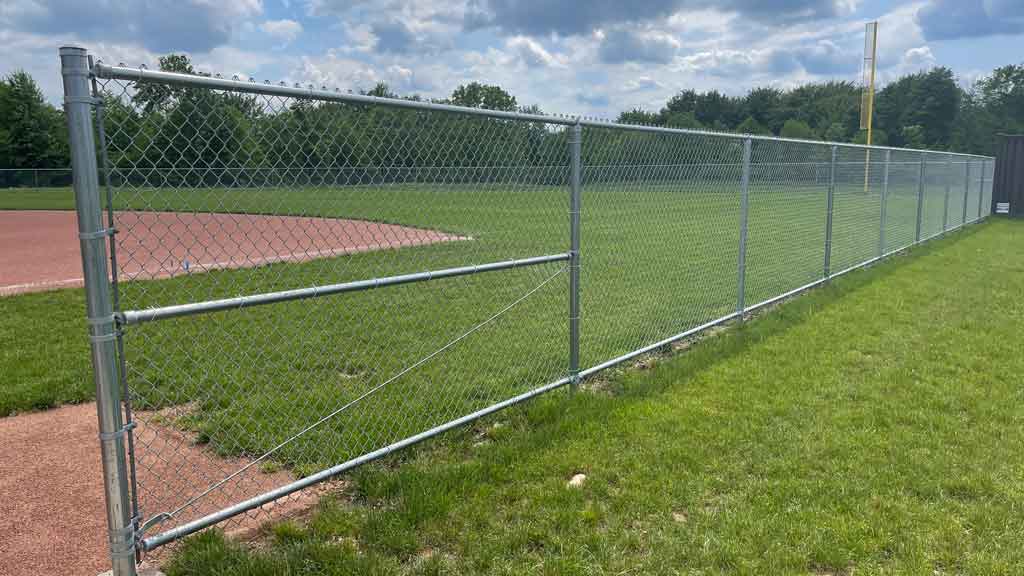
Chain link mesh with galvanized coatings are the most popular. Manufacturers offer the amount of galvanization in two levels.
A 1.2 ounce galvanization and a 2.0 galvanization. The industry standard is the 1.2 ounce. However, in ares where corrosion is more likely, the 2.0 ounce will last longer and is worth the extra investment.
Fencing near major highways, where roads are salted during the winter months, benefit from the heavier 2.0 galvanized coating.
There are two common methods to galvanize the mesh. GBW which stands for galvanized before weaving and GAW which stands for galvanized after weaving.
Galvanized Before Weaving
Or GBW wire mesh is fabricated with wire strands that are drawn through molten zinc galvanization. Next, the strands are woven together after cooling.
This requires a special machine. After weaving, the ends of the wire are cut. As a result, a small amount of bare metal is left exposed. This can lead to slight rusting or corrosion. However, in most applications is of little concern.
Galvanized After Weaving
Or GAW wire mesh is woven together first. Next, the mesh is drawn through a bath of molten zinc galvanization.
This process fully coats all areas of the wire mesh. As a result, providing the best rust and corrosion prevention.
Aluminized Wire Mesh
Aluminized chain link wire mesh has an aluminum coating added to the individual stands of steel wire much like the process used for GBW galvanized wire mesh.
However, the aluminum coating performs much better in corrosive areas. Aluminized wire mesh is often specified for large industrial applications such as government and federal projects or where highly corrosive chemicals will be in close proximity.
Vinyl Coated Wire Mesh
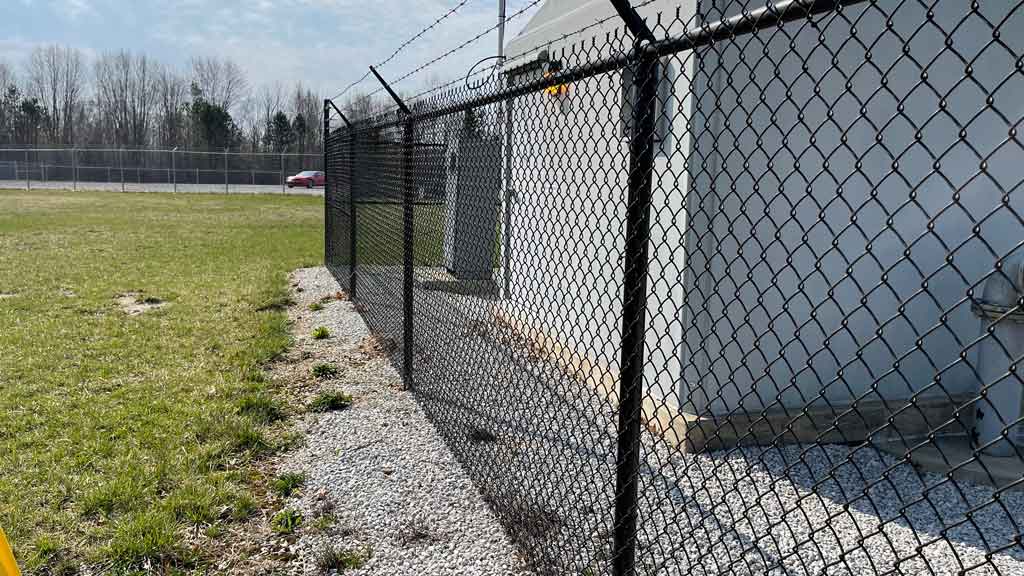
For consumers that want their chain link fence to be a color other than silver, vinyl coated chain link fabric is the answer. Vinyl coated mesh comes is a variety of colors.
Black, Green, Brown and White are all standard. However, almost any color imaginable is available for a special setup fee. Just like standard mesh, it is available in different heights, gauges and mesh sizes.
Furthermore, there are three methods of coating the strands of wire used to weave together the chain link mesh.
Extruded Vinyl Coated Wire Mesh
Extruded vinyl coated wire is a process where the galvanized steel core wire is pulled through an external vinyl coating. It is the most common method for vinyl coating wire mesh.
Furthermore, it provides good life for residential and commercial projects.
Extruded and Bonded Coated Wire Mesh
Also referred to as extruded and adhered wire mesh. Much like extruded mesh, wire is pulled through a vinyl coating. However, an addition of a binding agent or glue helps the bond.
As a result, the coating adheres better to the galvanized core wire. This provides more resistant to peeling or chipping of the vinyl coating over time.
Better suited for commercial projects that will take a light amount of abuse such as a playground or daycare.
Fused and Bonded Coated Wire Mesh
Fused and bonded wire mesh is the strongest and most durable coating. This process is very much like powder coating the wire. Even though fused and bonded wire mesh has a thinner coating, it is stronger than the other two methods.
Fused and bonded wire is best for industrial applications and provides longer life out of the three types of coatings.
Conclusion
There you have it. Everything you wanted to know about chain link mesh. And probably some things you didn’t. However, you now have the knowledge to choose the best mesh or fabric for you project!

